Nestled between iconic mountains and the Atlantic Ocean, its white sandy beaches, great food, vibrant bars and myriad of activities from vineyards to hiking to cage diving make Cape Town an amazing holiday destination.
Thirteen years ago I walked along Kloof Street almost every day for a week before departing for Namibia. Aside from my accommodation being there, in truth, I was using the street’s historic buildings, restaurants and unique shops to hide from the rain. It was the start of September, and my sightseeing - or adventure sports, as I was so inclined - was curtailed, by the poor weather. On this second recent visit, I travelled in mid-October and was blessed with a heady mix of sun and rainstorms.
Having consulted with my travel crew, this is the pick of activities for a five day itinerary.
TIP: Winter (June – August) can be a bit chillier, summer can be very hot so autumn (March – May) and spring (September to November) are recommended for nice weather and fewer tourists.

Stunning vistas from Table Mountain.
“Having a pint on Table Mountain”
Travelling in a group often means a planned activity gets cancelled in favour of something else or the weather may not suit. When planning this trip, I had only one real definitive aim: “I want to go up Table Mountain” having failed daily on the previous trip. Our chief organiser, a South African friend just laughed at me “Amii, we will definitely do that”. Suffice to say, when we arrived at the cable car on our second last day to be told that the winds were too strong, I was gutted (and he was nervous!!). However, the following morning I woke up to the phone pinging “It’s open, get up, I’ve booked an uber”. Booking in advance is advisable but quite simply, whether you stand in the long queues or take the more expensive (but worth it) fast-track option, there is no better way to experience the stunning views of Cape Town. The Table Mountain Aerial Cableway brings you 1,000 metres above the city. You could spend several hours on the mountain as the top is two kilometres from one end to the other. The hiking is completely flat (as you can imagine) but it’s definitely worth getting out of the crowded areas to have a wander around this geological wonder.
TIP If the flatness of Table Mountain doesn’t raise your pulse, then you can hike up the Lion’s Head instead. From the base, it looks pretty steep but this well-trodden path is worth the trek for the remarkable views of the city, Table Mountain, the Twelve Apostles and Camps Bay beach below. Although pretty straightforward, you can join the sunrise or sunset tour. If going without a guide, go at sunrise as no one wants to be looking for you in the dark.
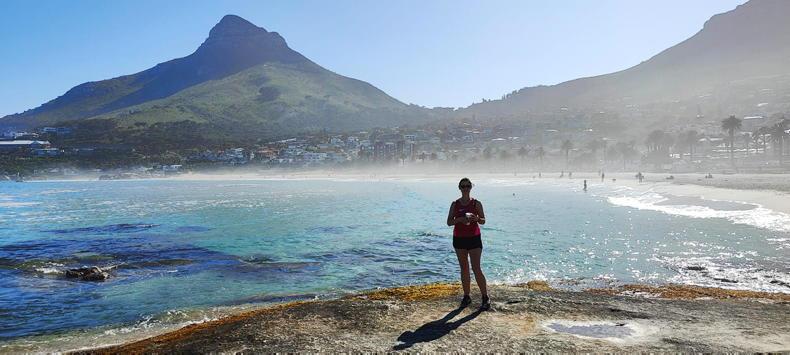
The white beaches and stunning scenery of Camps Bay
“That first sunset on Camps Beach”
Our party stayed in Camps Bay, a wealthy area with nice restaurants and bars, as well as safe and accessible (although the availability of Ubers make the city very accessible). The beach is a marvel best appreciated in storm conditions when the Atlantic throws white spray high onto the rocks. It’s even better to observe this powerful display in one of the canopied restaurants that lines the wide curving stretch of beautiful white sand. The vibe here is party like, food and drink are more expensive than elsewhere but it’s worth it.
TIP: In the evening, if you sit on ground level - while being entertained by the very agile acrobats - you will be approached by the art hawkers who ply their trade along the strip, but they will not bother you if you are not interested in purchasing. I bought some art from a Malawian, who had a cúpla focal, having met lots of Irish people through the Niall Mellon Trust. Haggle; but not too hard.
“The redevelopment of the V&A area is pretty cool. Lots of arts and food spaces so pretty much what Dublin should be”
The sea and the harbour are very much at the heart of Cape Town history. Some 370 years ago, Jan van Riebeeck built a small jetty to act as a refreshment station at the Cape for the ships of the Dutch East India Company. Development has continued to this day with the V&A Waterfront, now a 123-hectare site which welcomes millions of tourists every year. There is shopping, markets, music and lots of food options.
TIP If travelling in a group, not everyone will want to eat the same thing so head to the V&A Food Market for a dizzying selection of street food stands, craft beers and live music. There is also the Oranjezicht City Farm Market, which brings local farmers and artisanal food producers into the city every Saturday.
“That first vineyard where they gave us our glasses to take home and then we carried them around all day!”
In front of the Aquarium at the V&A Waterfront, you can jump on a tour bus. Similar to many other major cities, the tourist bus is open topped, red and hop-on, hop-off. It is, in fairness, the easiest way to tour the city with over 30 stops that showcase the city’s expansive history. We chose the Constantia Winelands tour. It is advised that you get into and out of your first vineyard quick as there are so many to see. And it is easy to get waylaid.
Our first stop was at Groot Constantia, and we got waylaid! The oldest wine-producing estate in South Africa, Groot Constantia is generous in its pouring and there are opportunities to visit the cellar and the historical manor house. As with many of these large vineyards, slavery was part and parcel of their success, a sad history acknowledged on the walls of the tasting rooms: “The enslaved at Groot Constantia significantly contributed to the prosperity of the estate and it stands today as a legacy of their exploitation and labour.”
Our second stop was Beau Constantia, a boutique wine farm overlooking False Bay. This is where we tucked into the first of many South African tasting platters, a mix of breads, crackers, cheeses, nuts, biltong and cured meats.
TIP If you have done wine tasting in other parts of the world and felt it was very much a taste, this is not the case in South Africa. Most tastings are what we would consider to be a full glass and there is no spit bucket presented.
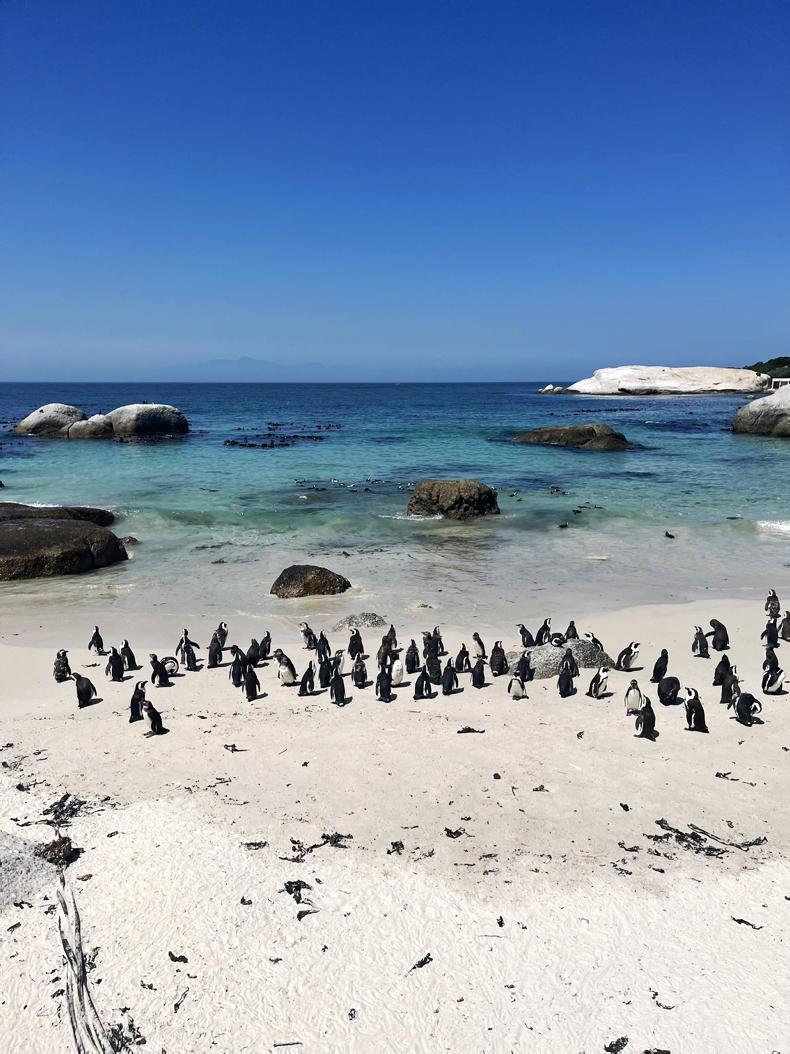
Penguins at Bolder Beach
“No trip to Cape Town would be complete without a trip to the penguins at Boulder Beach”
This breed - the African Penguins - are now listed as endangered. Boardwalks have been built for the penguins’ safety but they also provide up close access. On route back to Camps Bay, we dropped into the iconic Fish on the Rocks on the outskirts of Hout Bay harbour. I had the calamari and chips (R70/€4) and couldn’t finish it.
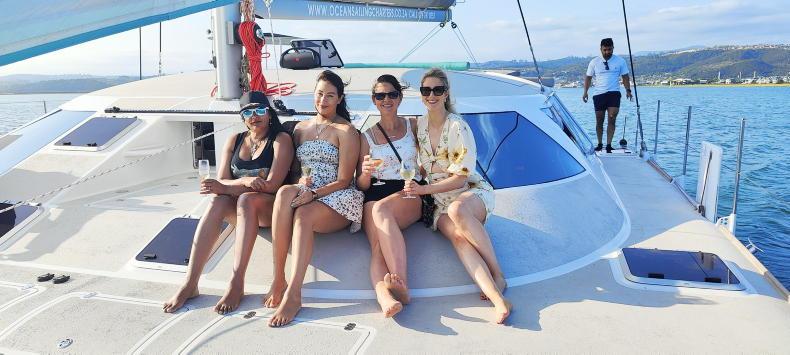
LaBloem Villas and catamaran Cruise Knysna
“My highlight was the boat”
We travelled down the Garden Route as far as Knysna, a town enclosed in a lagoon, once described as the most dangerous harbour entrance in the world. Although regulated by SANParks, the Lagoon is not a national park and is used for recreation. Suffice to say the best way to fully appreciate the sheer beauty of this place is by boat.
We chose a sunset Catamaran Cruise followed, on board, by a delicious Braai (South African BBQ) supper. Sitting on the trampoline nets at the front of the boat with the spray from the waves cooling the air was a magical experience and a real highlight. Only perfected by amazing views (a seal eating an octopus), the colours of the sunset, ice-cold bubbles and a great steak. (R1250/€75)
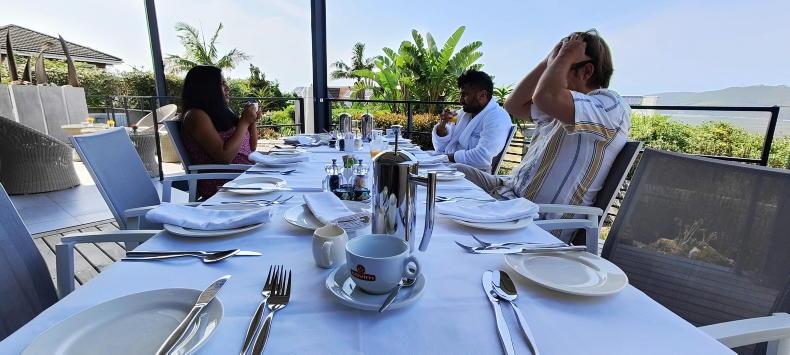
LaBloem Villas and catamaran Cruise Knysna
The highlight of our accommodation (and my own personal highlight of the trip) was in Knysna. We stayed at the Bloem Paradise Collection. Aside from the absolutely spotless suites with views over the lagoon, it was the South African service and hospitality that really made this special. Every morning, a huge individual breakfast was served on our patio with drinks served in the evening. Fireplaces, double showers, personalised bathroom amenities – the service and attention to detail will be hard matched (€200/suite/night).
Our group used Airbnb and booking.com to book accommodation which was all villas or apartments. Prices vary but it is possible to stay in the absolute lap of luxury in a really safe area of Cape Town for between €50 and €100 per night. Obviously the more you are willing to pay, the nicer the villas get.
No airlines currently offer direct flights between Dublin Airport and Cape Town Airport, however it is possible to get to Cape Town with just one stop. Irish passports do not require a visa to enter South Africa
Skyscanner suggests that the cheapest month to fly from Dublin to Cape Town is November. If you wanted to fly out this Saturday for two weeks, and time was not a constraint, travelling with Air France would cost you €729 (27 hours, 1 stop in Charles De Gaulle, overnight layover, 606 kg Co2). However if you are keen to get there fast, you could take the route chosen by some of my travelling group via London with British Airways and AerLingus (<16 hours, 1 stop in Heathrow, 758 kg CO2) but that comes at a price of €1,293. The rest of our group travelled with Emirates via Abu Dhabi. The price of flights fell between these two options but the lay overs were six hours in Abu Dhabi.
TIP We decided to book the lounge (economy passengers pay upon entry) at the airport, which gave us access to a buffet selection of good food, hot and cold, and an open bar. Drinks and food in the airport are very expensive (glass of wine €18) so the lounge, at €40-60, if the layover is long, is actually quite good value.
“Getting robbed and contributing to South African small business of mobile reselling”
With the good comes the bad and being conscious of safety is paramount. This quote was said in jest obviously but one of our group did have her mobile stolen in Cape Town, having inadvertently walked into an area that is best avoided. There are dangerous places in all cities and Cape Town is no exception.
TIP Educate yourself on which areas are safe, don’t walk around after dark and don’t carry your phone in your hand.
Nestled between iconic mountains and the Atlantic Ocean, its white sandy beaches, great food, vibrant bars and myriad of activities from vineyards to hiking to cage diving make Cape Town an amazing holiday destination.
Thirteen years ago I walked along Kloof Street almost every day for a week before departing for Namibia. Aside from my accommodation being there, in truth, I was using the street’s historic buildings, restaurants and unique shops to hide from the rain. It was the start of September, and my sightseeing - or adventure sports, as I was so inclined - was curtailed, by the poor weather. On this second recent visit, I travelled in mid-October and was blessed with a heady mix of sun and rainstorms.
Having consulted with my travel crew, this is the pick of activities for a five day itinerary.
TIP: Winter (June – August) can be a bit chillier, summer can be very hot so autumn (March – May) and spring (September to November) are recommended for nice weather and fewer tourists.

Stunning vistas from Table Mountain.
“Having a pint on Table Mountain”
Travelling in a group often means a planned activity gets cancelled in favour of something else or the weather may not suit. When planning this trip, I had only one real definitive aim: “I want to go up Table Mountain” having failed daily on the previous trip. Our chief organiser, a South African friend just laughed at me “Amii, we will definitely do that”. Suffice to say, when we arrived at the cable car on our second last day to be told that the winds were too strong, I was gutted (and he was nervous!!). However, the following morning I woke up to the phone pinging “It’s open, get up, I’ve booked an uber”. Booking in advance is advisable but quite simply, whether you stand in the long queues or take the more expensive (but worth it) fast-track option, there is no better way to experience the stunning views of Cape Town. The Table Mountain Aerial Cableway brings you 1,000 metres above the city. You could spend several hours on the mountain as the top is two kilometres from one end to the other. The hiking is completely flat (as you can imagine) but it’s definitely worth getting out of the crowded areas to have a wander around this geological wonder.
TIP If the flatness of Table Mountain doesn’t raise your pulse, then you can hike up the Lion’s Head instead. From the base, it looks pretty steep but this well-trodden path is worth the trek for the remarkable views of the city, Table Mountain, the Twelve Apostles and Camps Bay beach below. Although pretty straightforward, you can join the sunrise or sunset tour. If going without a guide, go at sunrise as no one wants to be looking for you in the dark.

The white beaches and stunning scenery of Camps Bay
“That first sunset on Camps Beach”
Our party stayed in Camps Bay, a wealthy area with nice restaurants and bars, as well as safe and accessible (although the availability of Ubers make the city very accessible). The beach is a marvel best appreciated in storm conditions when the Atlantic throws white spray high onto the rocks. It’s even better to observe this powerful display in one of the canopied restaurants that lines the wide curving stretch of beautiful white sand. The vibe here is party like, food and drink are more expensive than elsewhere but it’s worth it.
TIP: In the evening, if you sit on ground level - while being entertained by the very agile acrobats - you will be approached by the art hawkers who ply their trade along the strip, but they will not bother you if you are not interested in purchasing. I bought some art from a Malawian, who had a cúpla focal, having met lots of Irish people through the Niall Mellon Trust. Haggle; but not too hard.
“The redevelopment of the V&A area is pretty cool. Lots of arts and food spaces so pretty much what Dublin should be”
The sea and the harbour are very much at the heart of Cape Town history. Some 370 years ago, Jan van Riebeeck built a small jetty to act as a refreshment station at the Cape for the ships of the Dutch East India Company. Development has continued to this day with the V&A Waterfront, now a 123-hectare site which welcomes millions of tourists every year. There is shopping, markets, music and lots of food options.
TIP If travelling in a group, not everyone will want to eat the same thing so head to the V&A Food Market for a dizzying selection of street food stands, craft beers and live music. There is also the Oranjezicht City Farm Market, which brings local farmers and artisanal food producers into the city every Saturday.
“That first vineyard where they gave us our glasses to take home and then we carried them around all day!”
In front of the Aquarium at the V&A Waterfront, you can jump on a tour bus. Similar to many other major cities, the tourist bus is open topped, red and hop-on, hop-off. It is, in fairness, the easiest way to tour the city with over 30 stops that showcase the city’s expansive history. We chose the Constantia Winelands tour. It is advised that you get into and out of your first vineyard quick as there are so many to see. And it is easy to get waylaid.
Our first stop was at Groot Constantia, and we got waylaid! The oldest wine-producing estate in South Africa, Groot Constantia is generous in its pouring and there are opportunities to visit the cellar and the historical manor house. As with many of these large vineyards, slavery was part and parcel of their success, a sad history acknowledged on the walls of the tasting rooms: “The enslaved at Groot Constantia significantly contributed to the prosperity of the estate and it stands today as a legacy of their exploitation and labour.”
Our second stop was Beau Constantia, a boutique wine farm overlooking False Bay. This is where we tucked into the first of many South African tasting platters, a mix of breads, crackers, cheeses, nuts, biltong and cured meats.
TIP If you have done wine tasting in other parts of the world and felt it was very much a taste, this is not the case in South Africa. Most tastings are what we would consider to be a full glass and there is no spit bucket presented.

Penguins at Bolder Beach
“No trip to Cape Town would be complete without a trip to the penguins at Boulder Beach”
This breed - the African Penguins - are now listed as endangered. Boardwalks have been built for the penguins’ safety but they also provide up close access. On route back to Camps Bay, we dropped into the iconic Fish on the Rocks on the outskirts of Hout Bay harbour. I had the calamari and chips (R70/€4) and couldn’t finish it.

LaBloem Villas and catamaran Cruise Knysna
“My highlight was the boat”
We travelled down the Garden Route as far as Knysna, a town enclosed in a lagoon, once described as the most dangerous harbour entrance in the world. Although regulated by SANParks, the Lagoon is not a national park and is used for recreation. Suffice to say the best way to fully appreciate the sheer beauty of this place is by boat.
We chose a sunset Catamaran Cruise followed, on board, by a delicious Braai (South African BBQ) supper. Sitting on the trampoline nets at the front of the boat with the spray from the waves cooling the air was a magical experience and a real highlight. Only perfected by amazing views (a seal eating an octopus), the colours of the sunset, ice-cold bubbles and a great steak. (R1250/€75)

LaBloem Villas and catamaran Cruise Knysna
The highlight of our accommodation (and my own personal highlight of the trip) was in Knysna. We stayed at the Bloem Paradise Collection. Aside from the absolutely spotless suites with views over the lagoon, it was the South African service and hospitality that really made this special. Every morning, a huge individual breakfast was served on our patio with drinks served in the evening. Fireplaces, double showers, personalised bathroom amenities – the service and attention to detail will be hard matched (€200/suite/night).
Our group used Airbnb and booking.com to book accommodation which was all villas or apartments. Prices vary but it is possible to stay in the absolute lap of luxury in a really safe area of Cape Town for between €50 and €100 per night. Obviously the more you are willing to pay, the nicer the villas get.
No airlines currently offer direct flights between Dublin Airport and Cape Town Airport, however it is possible to get to Cape Town with just one stop. Irish passports do not require a visa to enter South Africa
Skyscanner suggests that the cheapest month to fly from Dublin to Cape Town is November. If you wanted to fly out this Saturday for two weeks, and time was not a constraint, travelling with Air France would cost you €729 (27 hours, 1 stop in Charles De Gaulle, overnight layover, 606 kg Co2). However if you are keen to get there fast, you could take the route chosen by some of my travelling group via London with British Airways and AerLingus (<16 hours, 1 stop in Heathrow, 758 kg CO2) but that comes at a price of €1,293. The rest of our group travelled with Emirates via Abu Dhabi. The price of flights fell between these two options but the lay overs were six hours in Abu Dhabi.
TIP We decided to book the lounge (economy passengers pay upon entry) at the airport, which gave us access to a buffet selection of good food, hot and cold, and an open bar. Drinks and food in the airport are very expensive (glass of wine €18) so the lounge, at €40-60, if the layover is long, is actually quite good value.
“Getting robbed and contributing to South African small business of mobile reselling”
With the good comes the bad and being conscious of safety is paramount. This quote was said in jest obviously but one of our group did have her mobile stolen in Cape Town, having inadvertently walked into an area that is best avoided. There are dangerous places in all cities and Cape Town is no exception.
TIP Educate yourself on which areas are safe, don’t walk around after dark and don’t carry your phone in your hand.










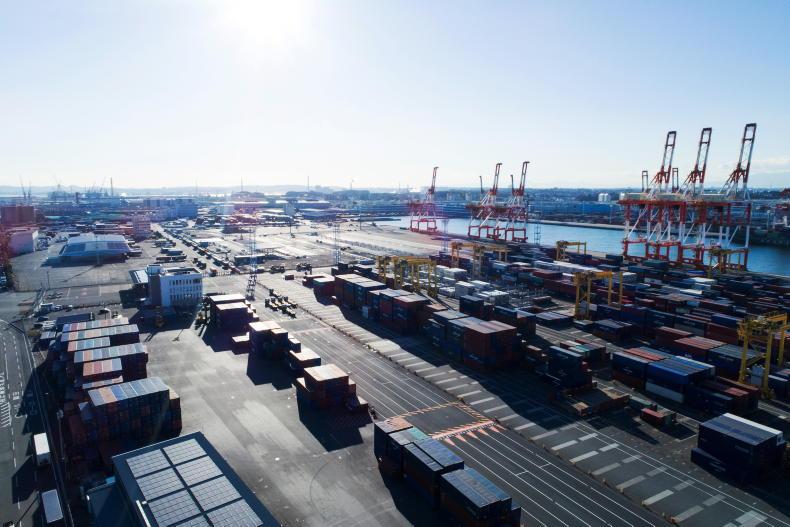

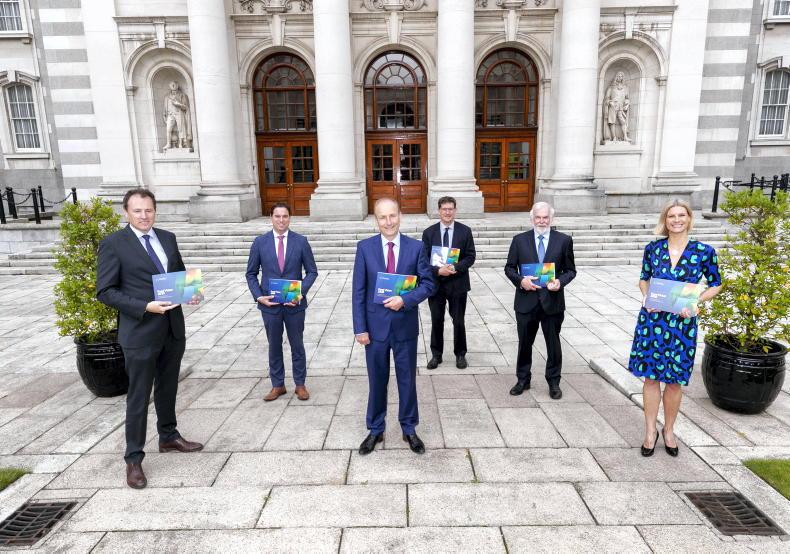
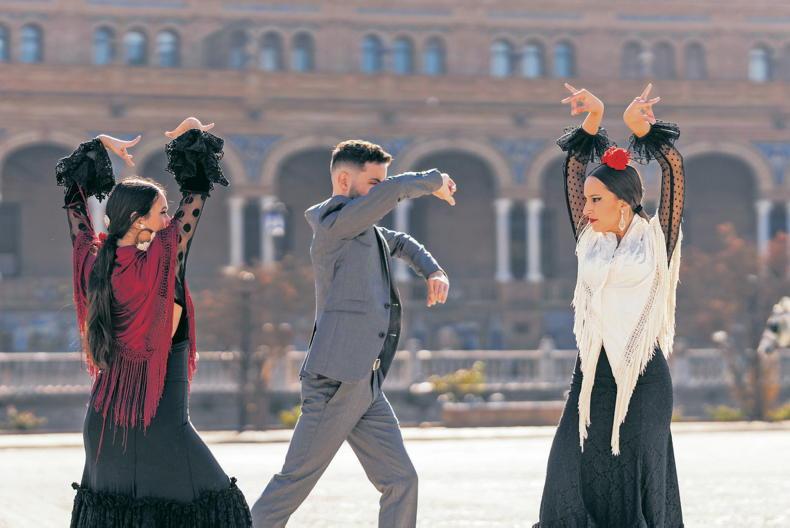
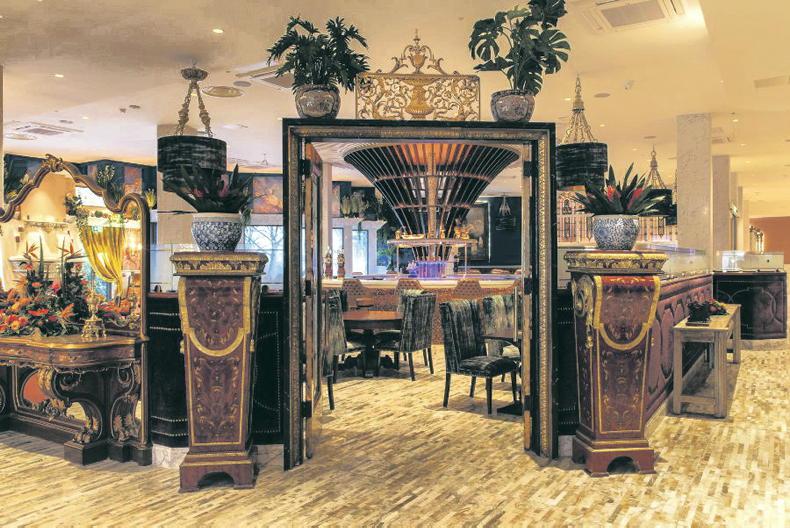
SHARING OPTIONS